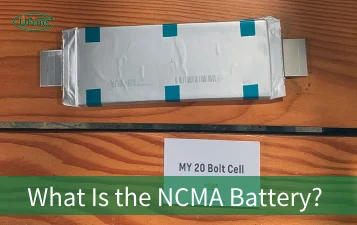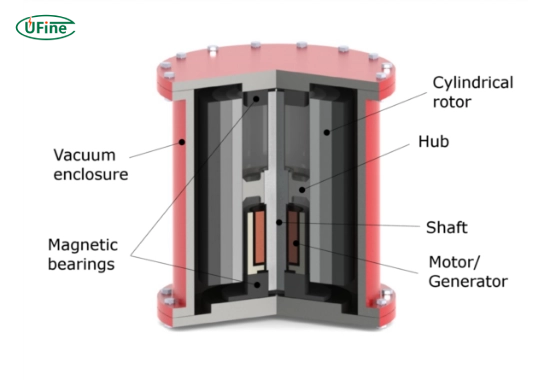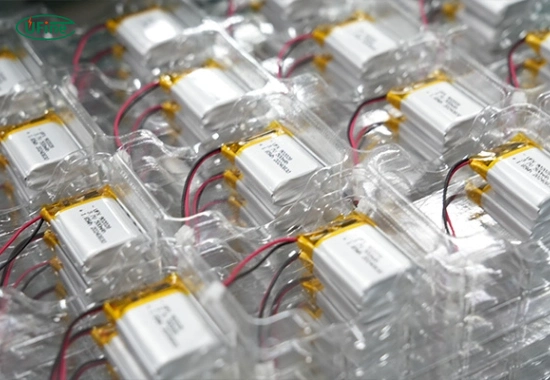
- Part 1. What are mechanical batteries?
- Part 2. What are lithium batteries?
- Part 3. Key differences between mechanical batteries and lithium batteries
- Part 4. Advantages of mechanical batteries
- Part 5. Advantages of lithium batteries
- Part 6. Disadvantages of mechanical batteries
- Part 7. Disadvantages of lithium batteries
- Part 8. Applications of mechanical batteries
- Part 9. Applications of lithium batteries
- Part 10. How to choose the right battery for your application?
- Part 11. FAQs
The demand for efficient and sustainable energy storage solutions is greater than ever. As industries, businesses, and individuals seek to power everything from electric vehicles to renewable energy grids, the choice of battery technology has become critical. Two prominent contenders in the energy storage market are mechanical and lithium-ion batteries.
But which one is right for your application? In this article, we’ll dive deep into the differences, advantages, and limitations of both technologies so you can make an informed choice. We’ll also address frequently asked questions to help you better understand how these technologies work.
Part 1. What are mechanical batteries?
Mechanical batteries are energy storage systems that convert electricity into mechanical energy, store it, and then convert it back into electricity when needed. Unlike chemical batteries, these systems rely on physical mechanisms such as flywheels, compressed air, or pumped hydro storage to store energy.
How do mechanical batteries work?
Mechanical batteries store energy in a physical medium, such as a spinning flywheel or compressed air. The stored mechanical energy is converted back into electricity when energy is needed. For example, in a flywheel system, energy is stored by spinning a rotor at high speeds, and the kinetic energy is later transferred back into the electrical grid.
Part 2. What are lithium batteries?
Lithium-ion batteries are electrochemical storage devices that use lithium ions to store and release energy. Due to their high energy density and efficiency, they are widely used in portable electronics, electric vehicles, and renewable energy applications.
How do lithium batteries work?
Lithium-ion batteries move lithium ions between the anode and cathode during charge and discharge cycles. This movement creates an electrical current that powers devices or systems. Lithium batteries’ efficiency and compact size make them ideal for modern energy needs.
Part 3. Key differences between mechanical batteries and lithium batteries
When comparing mechanical and lithium-ion batteries, it’s essential to consider factors such as energy efficiency, storage capacity, cost, durability, and environmental impact. Let’s break down these differences:
Energy density:- Lithium batteries: Known for their high energy density, they can store more energy in a compact space, making them ideal for applications like electric vehicles and portable devices.
- Mechanical batteries: Tend to have lower energy density, as they rely on physical systems that require more space for energy storage.
- Lithium batteries: Offer a high round-trip efficiency (over 90%), which means very little energy is lost during the charge and discharge process.
- Mechanical battery: Efficiency varies depending on the type (e.g., flywheels can reach up to 85-90%, but pumped hydro storage may be lower).
- Lithium batteries: Have a finite lifespan, with most lasting 500–1,500 charge cycles before performance degrades.
- Mechanical batteries: Typically have longer lifespans, as they don’t rely on chemical reactions. For example, flywheels can last decades with minimal maintenance.
- Lithium batteries: Initial costs are higher, and replacement costs due to degradation can add up over time.
- Mechanical batteries: Often have higher upfront costs but lower long-term maintenance expenses.
- Lithium batteries: Mining lithium and other rare earth metals have significant environmental consequences, and battery recycling remains a challenge.
- Mechanical batteries: Are generally considered more environmentally friendly, as they don’t rely on harmful chemicals or rare materials.
Part 4. Advantages of mechanical batteries
Mechanical batteries have several unique benefits that make them appealing for specific applications.
- Sustainability: Mechanical batteries don’t use harmful chemicals, making them environmentally friendly.
- Longevity: Many mechanical systems, such as flywheels, can last decades with proper maintenance.
- Scalability: Systems like pumped hydro storage can store large amounts of energy, making them ideal for grid-level applications.
- Fast response time: Flywheel systems can quickly discharge energy, making them suitable for applications requiring rapid power bursts.
Part 5. Advantages of lithium batteries
Lithium-ion batteries dominate the energy storage market for good reason. Here’s why:
- Compact size: Their high energy density allows for compact designs for portable devices and EVs.
- High efficiency: Lithium batteries minimize energy loss with round-trip efficiencies exceeding 90%.
- Versatility: Lithium batteries are used in various applications, from smartphones to renewable energy storage.
- Mature technology: The widespread adoption of lithium technology has led to continuous improvements and cost reductions.
Part 6. Disadvantages of mechanical batteries
While mechanical batteries are promising, they are not without challenges:
- Large footprint: Mechanical systems often require significant physical space, limiting their use in urban or small-scale settings.
- Energy density: They generally store less energy per space unit than lithium batteries.
- High initial costs: Building infrastructure like pumped hydro storage requires substantial investment.
- Complexity: Flywheels require precise engineering and ongoing maintenance to ensure peak performance.
Part 7. Disadvantages of lithium batteries
Despite their popularity, lithium-ion batteries have several downsides:
- Degradation: Over time, lithium batteries lose capacity, requiring costly replacements.
- Environmental concerns: Mining lithium and other materials have detrimental ecological effects.
- Safety risks: Lithium batteries can overheat or catch fire if improperly handled.
- Recycling challenges: While recycling technology is improving, it is not widespread or efficient.
Part 8. Applications of mechanical batteries
Mechanical batteries are particularly suited for applications that require long-term energy storage or rapid energy discharge. Examples include:
- Grid energy storage: Pumped hydro and flywheels are often used to stabilize power grids.
- Backup power: Flywheels can provide backup power for data centers or critical infrastructure.
- Renewable integration: Mechanical systems can store excess energy from renewable sources like wind or solar power.
Part 9. Applications of lithium batteries
Lithium-ion batteries are highly versatile and are used in a wide variety of applications:
- Electric vehicles: Most EVs use lithium batteries for their high energy density.
- Consumer electronics: Smartphones, laptops, and other portable devices are powered by lithium-ion technology.
- Residential energy storage: Homeowners use lithium batteries to store energy from solar panels.
- Aerospace and robotics: Lithium batteries are ideal for lightweight, high-power applications.
Part 10. How to choose the right battery for your application?
The choice between mechanical batteries and lithium batteries depends on several factors:
- Energy needs: Lithium batteries are ideal for compact, high-energy solutions, while mechanical systems may be better for large-scale energy storage.
- Budget: Consider both upfront and long-term costs.
- Space constraints: Mechanical systems require more space, while lithium batteries are compact.
- Environmental goals: Mechanical systems are more eco-friendly, but recycling lithium batteries can reduce their impact.
- Application: Match the battery type to your needs (e.g., EVs vs. grid storage).
Part 11. FAQs
-
What is the lifespan of a lithium battery?
Most lithium-ion batteries last between 500 and 1,500 charge cycles, depending on usage and maintenance. -
Are mechanical batteries better for the environment?
Mechanical batteries are generally more environmentally friendly because they don’t rely on harmful chemicals or mining rare earth metals. -
Which battery type is more cost-effective in the long run?
While lithium batteries have lower upfront costs, mechanical batteries often have longer lifespans and lower maintenance costs, making them more cost-effective. -
Can mechanical batteries be used in electric vehicles?
Flywheels are rarely used in EVs due to their large size and lower energy density, but they work excellently for grid storage. -
What happens to lithium batteries after they degrade?
Lithium batteries can be recycled, but the process is evolving to become more efficient and widespread.
Related Tags:
More Articles

What is the NCMA battery? What is the difference between it and the NMC battery? Which one is better? This article will answer your questions.
What Is the Lithium Battery Short Circuit?
What is the lithium battery short circuit? To understand a lithium battery short circuit, we first need to understand how the battery works.
How to Distinguish Battery Cells, Battery Modules, And Battery Packs?
Discover how battery cells, modules, and packs work, their engineering roles, and practical guidance for safe and efficient design.
What is the Difference Between Silver Zinc Battery vs. Lithium-ion Rechargeable?
Compare silver zinc and lithium-ion rechargeable batteries: energy density, cycle life, safety, cost, and uses in drones, medical devices, EVs, and electronics.
What are Watts and Watt Hours in Battery?
Understand watt vs watt-hour in batteries: key differences, how to calculate capacity, and why they matter. Includes free comparison table.




